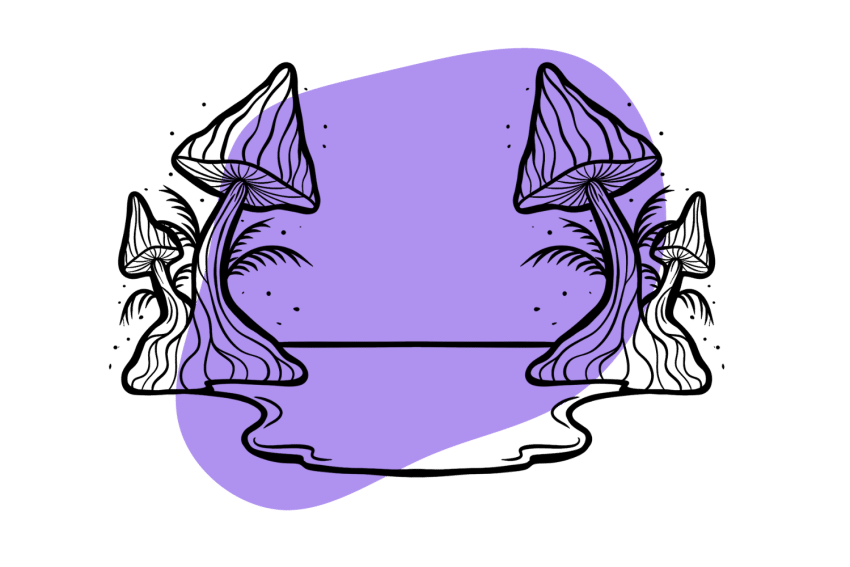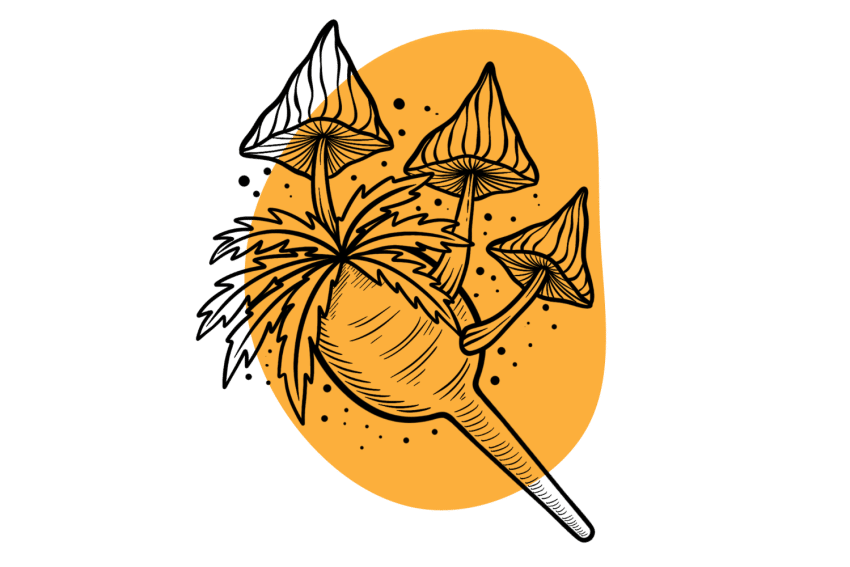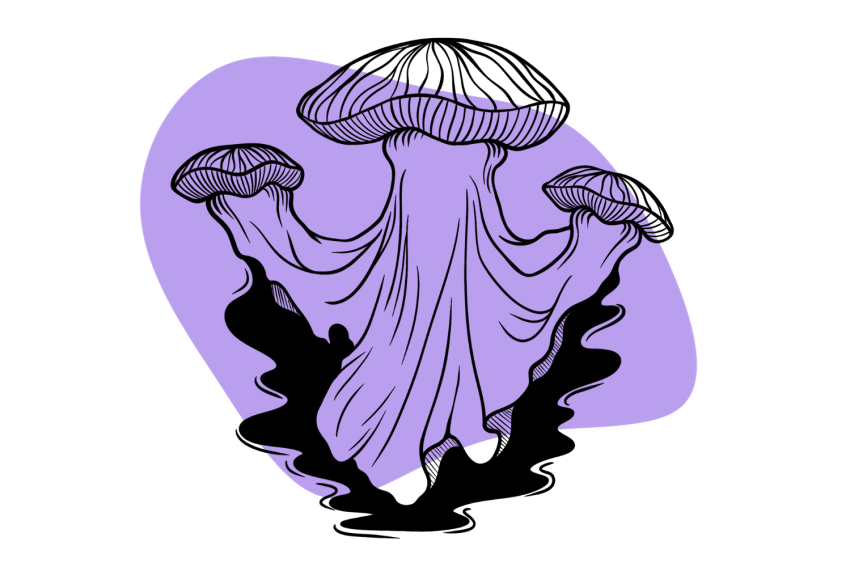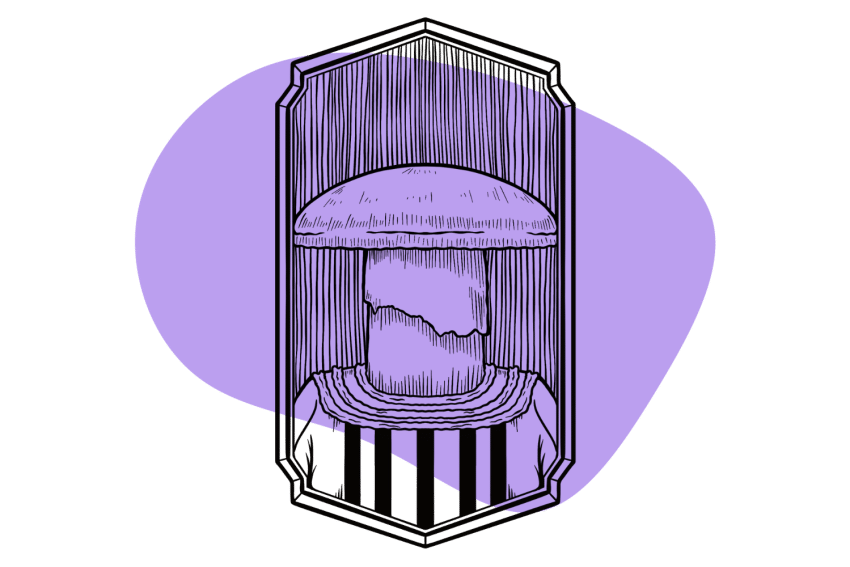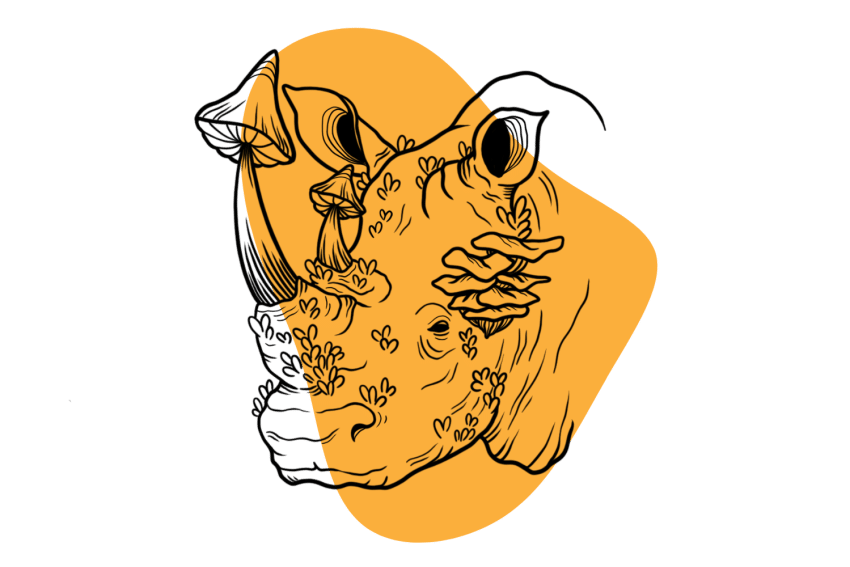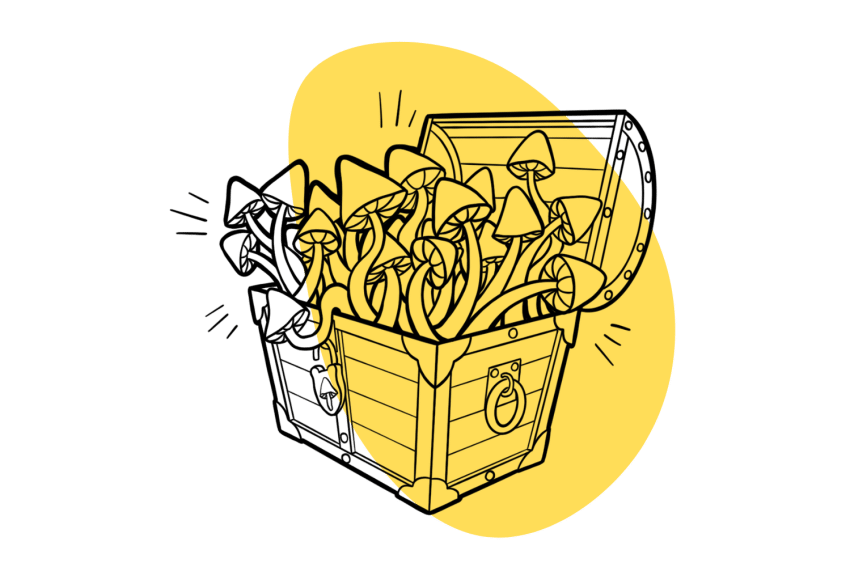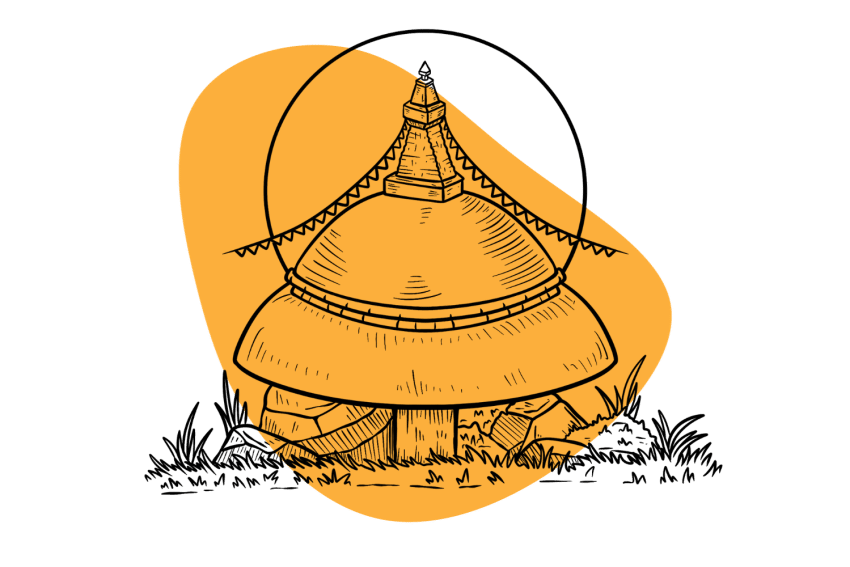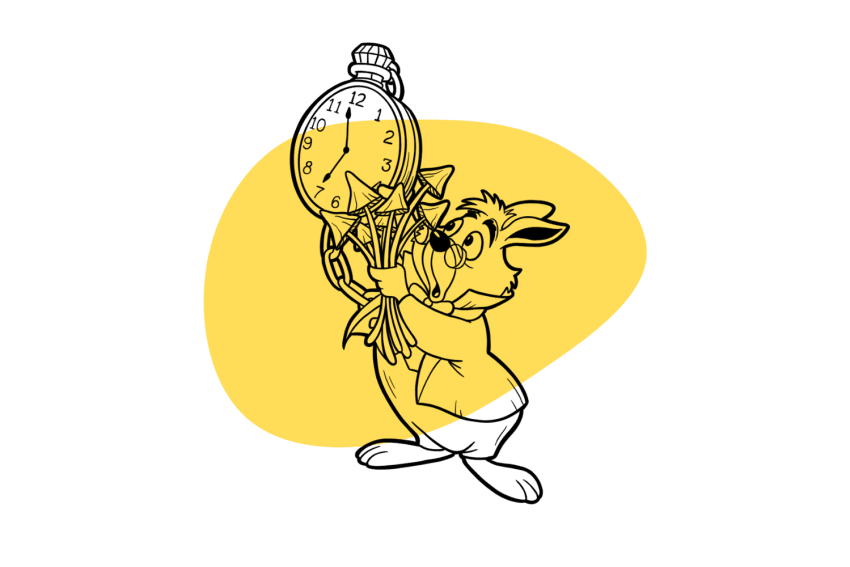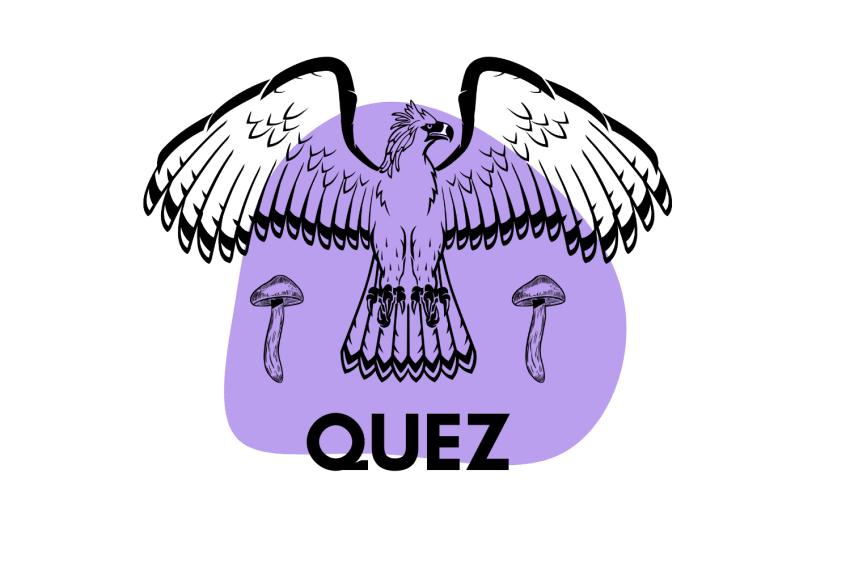The A+ Strain Mushroom — All You Need to Know
A+ strain is average in terms of potency — but it’s capable of producing shrooms of colossal size.
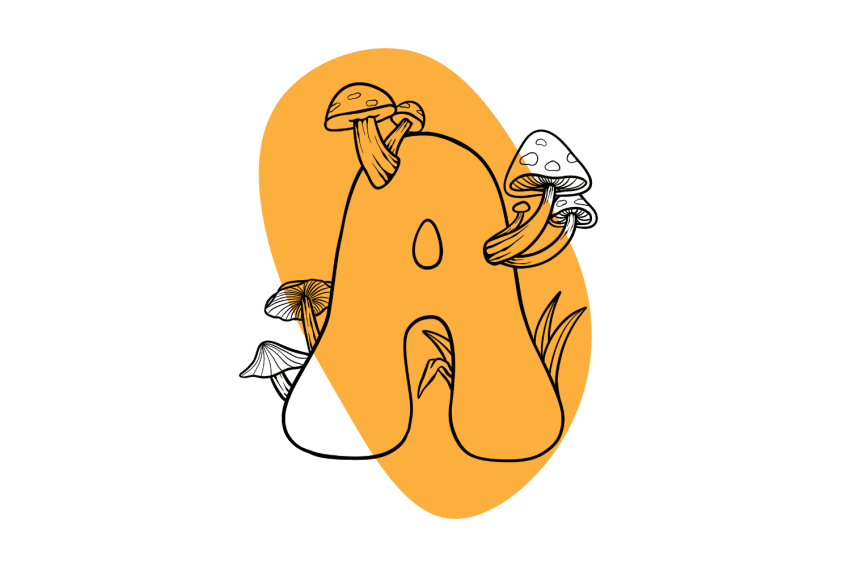
A+ Strain (AKA the A-strain) is a popular Psilocybe cubensis mushroom favored for its above-average potency.
The A+ Strain is relatively easy to grow and can produce good yields when grown in favorable conditions. However, producing multiple healthy flushes can prove difficult due to issues with contamination.
A+ was initially developed by “Mr. G” — an infamous mushroom breeder and Shroomery contributor. It’s now sold on virtually all major spore distributors and is relatively common on the streets.
The A+ Strain has several notable characteristics but is a pretty average-looking Psilocybe cubensis mushroom. The fruiting bodies are medium to large-sized with slim white stems and rounded golden caps that often develop warts throughout maturity. This gives them a particularly “mystical” look similar to Fly Agaric (Amanita muscaria) but without the intense red and white coloration.
A+ Strain is perhaps most famous for its heavy spore production — a trait that makes it an excellent option for spore vendors.
When consumed, the A+ Strain produces excellent visuals and a strong feeling of euphoria. It’s also a reliable choice for people looking to microdose psilocybin-containing mushrooms.
You can also find an Albino variant of this strain (AA+).
A+ Strain Specs
| Potency | Above Average 💪 |
| Cultivation | Beginner or Intermediate |
| Species | Psilocybe cubensis |
| Substrate Recommendation | Rye Grain |
| Cost | $$ |
| Sold By | Miracle Farms |
History of the A+ Strain Mushroom
The specific origins of this strain are lost in time, and even after much research, we’ve uncovered very little information.
A+ was “developed” — or introduced — by Shroomery.org user, Mr. G, but it’s unclear whether he discovered the strain or where exactly he found it. However, this strain clearly thrives in more tropical or subtropical growing conditions and likely comes from either a South American strain or Southeast Asian Psilocybe cubensis strain.
Even with a blurry history, this is a fantastic strain for anyone wanting a mushroom of above-average potency that has the potential to produce good yields.
A+ Strain Potency & Psilocybin Content
Expect slightly above average potency from this strain — somewhere in the range of 0.70% and 1.00% total tryptamines.
We don’t currently have specific analytical date for this mushroom strain, but there is some analysis of the closely-related albino version (AA+).
A grower named “Blackstar Mycology” entered a sample of the albino A+ strain into the 2021 Oakland Hyphae Psilocybin Cup. The tests indicated a total tryptamine level of 0.83% which places it above average in terms of potency.
This puts the strain on a similar level as other Psilocybe cubensis mushrooms, such as Golden Teacher, Treasure Coast, Malabar, and Blue Meanies.
These numbers fluctuate depending on the conditions the mushrooms grow in (this goes for all strains).
Mushrooms grown in perfect conditions will give a higher yield and potency. However, if the mushrooms experience issues during colonization and fruiting, psilocybin levels and yield can be greatly affected.
Where to Buy A+ Strain Spores
A-Strain is relatively popular among the mushroom community, and its spores are dispersed throughout Canada, the United States, and Europe. Spore samples are available from most established vendors in spore syringes, prints, and, occasionally, live cultures.
Some vendors may also stock ready-to-grow kits with everything you need to grow A-Strain — including the spores.
If you’re in Canada, you’ll find A-Strain spores at Sporeslab under the label “A+.” The Albino variety (AA+) is also available for Canadian shipping from Spores101.
If you’re living in the United States, spores are available from Miracle Farms.
In the UK & mainland Europe, A-Strain spores are available from The Magic Mushroom Shop in spore prints rather than syringes.
How to Grow the A-Strain Mushroom
A-strain can be cultivated like any other Psilocybe mushroom. However, being a subtropical strain, you’ll see the best results in a warmer growing environment.
Most varieties of Psilocybe cubensis fruit best at temperatures between 74℉ to 77℉ (23℃ to 25℃), but A-strain prefers temperatures of 79℉ to 82℉ (26℃ to 28℃). Using a heat mat is the best way to achieve these temperatures and stabilize the growing environment.
A-strain is relatively contamination resistant. However, the increased fruiting temperatures provide the perfect conditions for bacterial growth that can eventually result in mold — this could be why some struggle to produce more than three healthy flushes.
Keep everything as sterile as possible throughout the growing process when growing this strain. If you’re unsure of how to do this — or have questions on any other steps of the cultivation process — read through this mushroom cultivation guide.
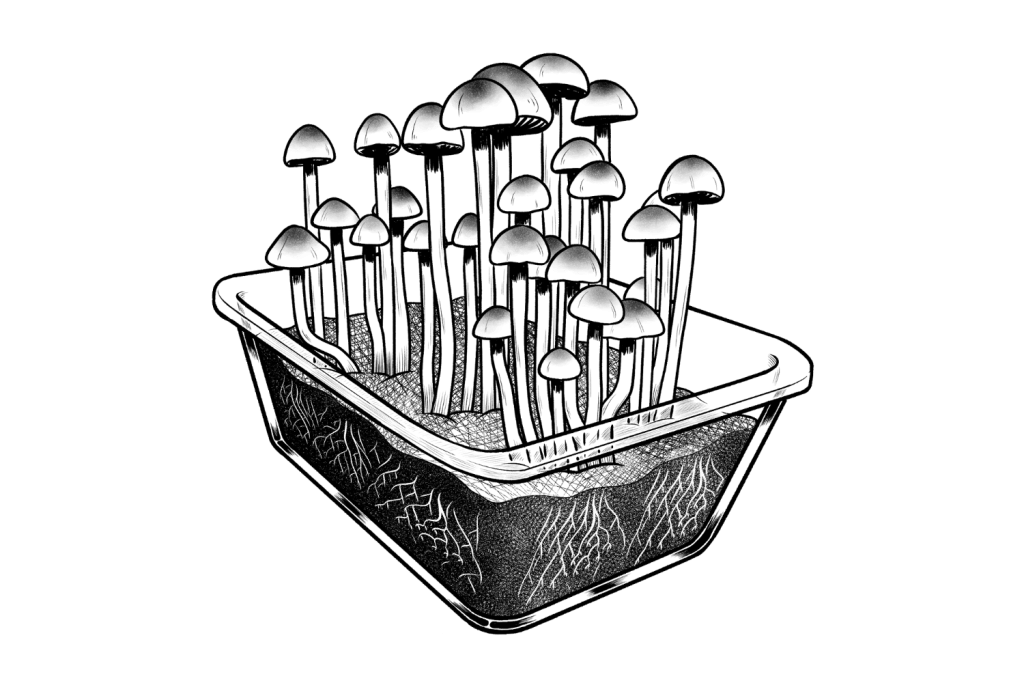
In terms of a growing medium, A-Strain does best in the grain — specifically rye grain. That being said, many cultivators have produced good results from BRF cakes, flax seed, and a mix of coco fiber and Vermiculite.
Some have reported slower development and growth from A-Strain than similar strains. The colonization phase can take up to 50% longer than strains such as Golden Teacher.
Fruiting in the first flush can also be delayed, with production being relatively sparse in terms of fruiting bodies. However, this usually improves in the second and third flushes.
Similar Strains to A+ Strain
The A+ Strain is a stable strain when grown under the right conditions, and several large uniform mushrooms can be produced over multiple flushes.
If you’re looking for a Psilocybe cubensis strain that produces larger fruiting bodies, here are five alternatives to take a look at:
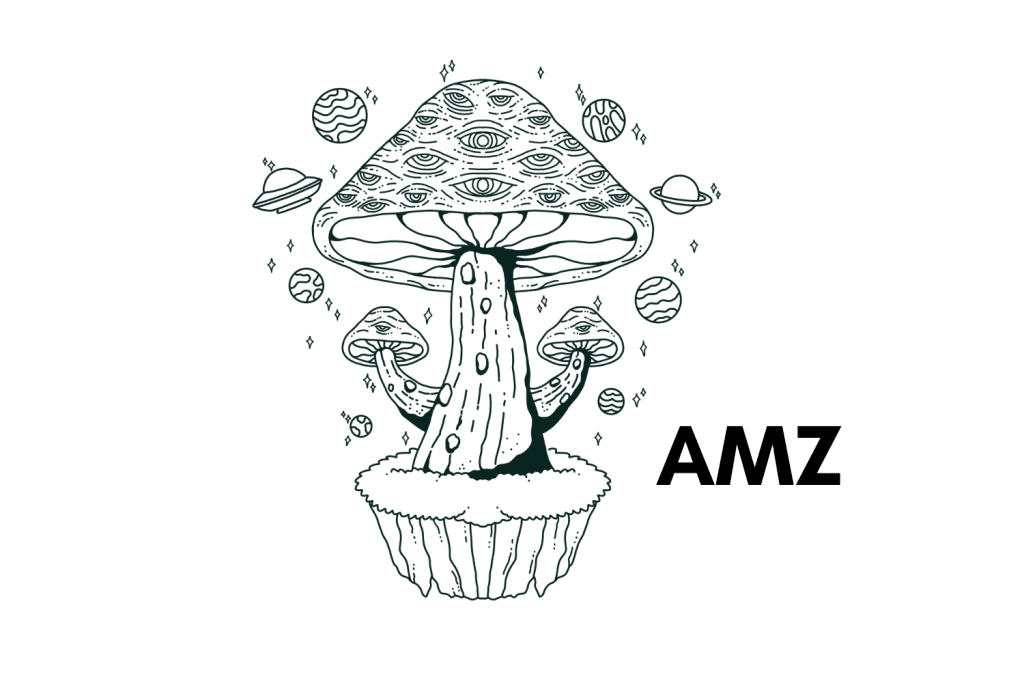
Amazon
The Amazon strain (AMZ) — originally known as “PES (Pacifica Exotica Spora) Amazonia” — is a widely available cubensis strain that produces large fruiting bodies. This strain has average potency but is renowned for its large mushrooms and high yields.
Regardless of the size of the fruiting bodies, Amazon is a fast-growing strain. However, the stems are hollow, so a large amount of the fresh weight is lost through the drying process.
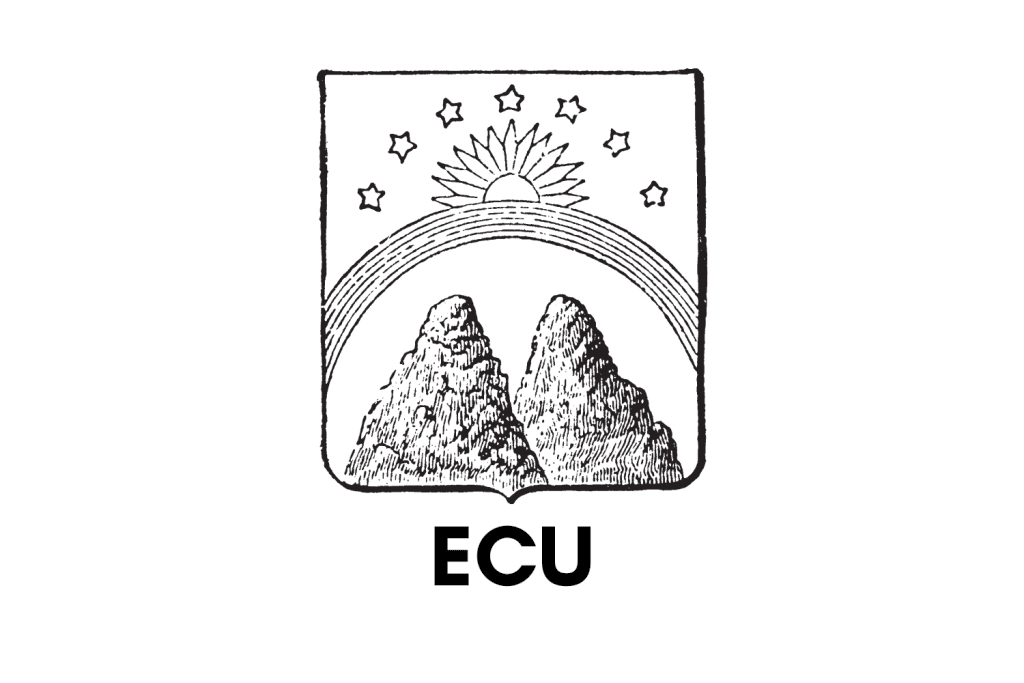
Ecuador
The Ecuador strain (ECD) was discovered in, you guessed it, Ecuador — more specifically, in the Ecuadorian mountains. It was discovered over 30 years ago by BIO, and its spores are available at most large vendors across the U.S, Canada, and Europe.
This strain is slow to colonize and fruit, but it produces large mushrooms with above-average potency. Ecuador is relatively contamination-resistant and can handle an unoptimized growing environment. It’s a good choice for beginners looking to produce large psilocybin-containing shrooms.
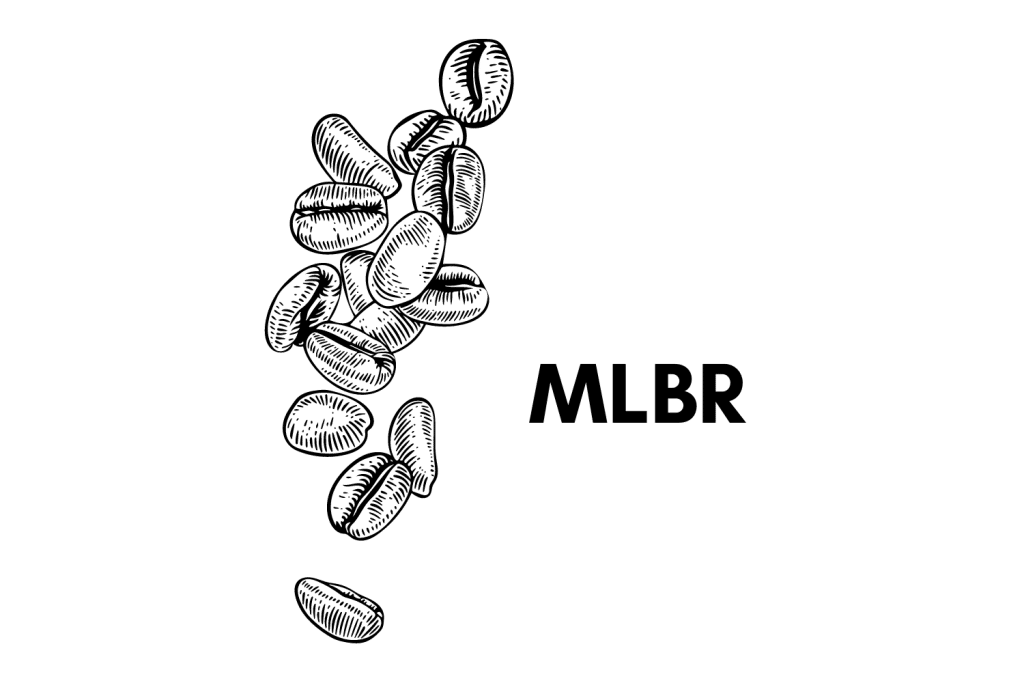
Malabar India
Malabar India (MLBR) is a particularly easy cubensis strain to grow and produces large highly-potent mushrooms. Spores of this strain can be difficult to find, but they’re worth searching for.
Some growers on Reddit have reported single mushrooms weighing over 250 grams fresh.
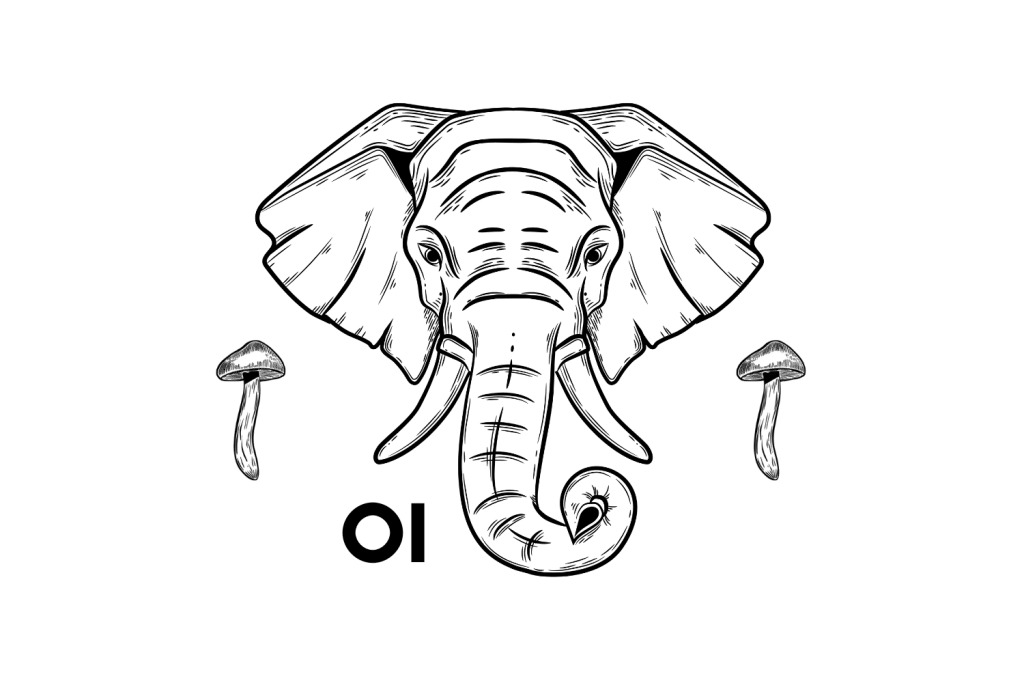
Orissa India
The Orissa India strain (OI) was first discovered growing in cow manure close to a temple in the mountains of Odisha (formally known as Orissa).
This strain is highly potent and produces large fruiting bodies. An Orissa sample once held the record for the largest Psilocybe cubensis mushroom ever grown. That title was later beaten by a grower that cultivated a large sample of the South American strain.
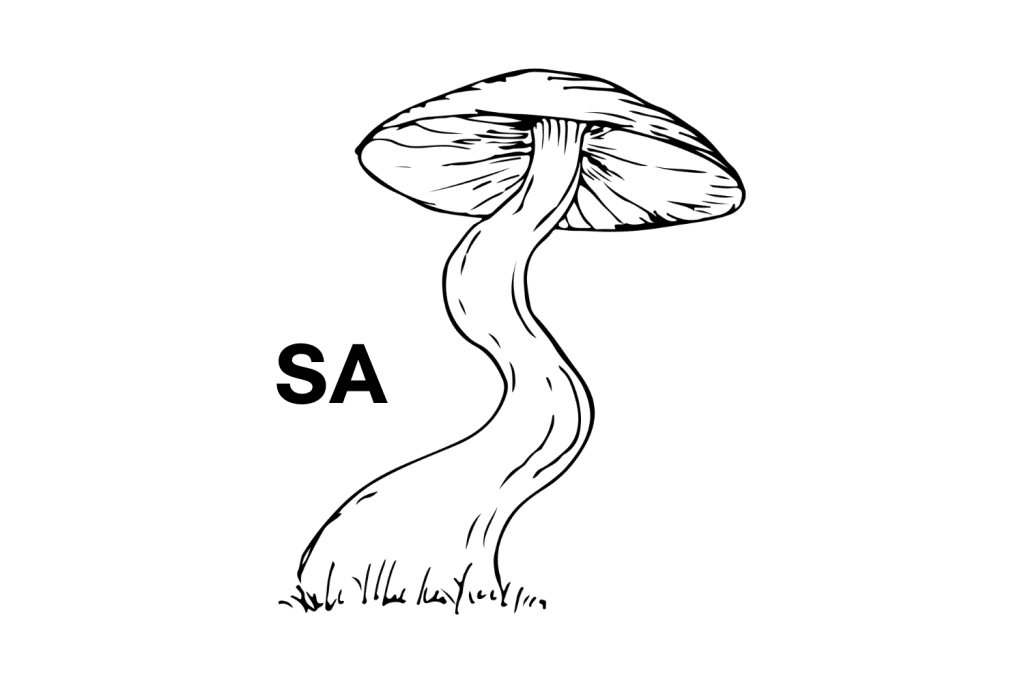
South American
South American cubensis (SA) currently holds the record for the largest Psilocybe cubensis mushroom ever cultivated. Shroomery user P. Menace cultivated the record-breaking shroom.
This strain is famous for its ability to produce notoriously large fruits. However, it also produces decent psilocybin levels and is surprisingly fast-growing. If you’re searching for a mushroom strain purely for the size potential, you won’t find much better than South American.
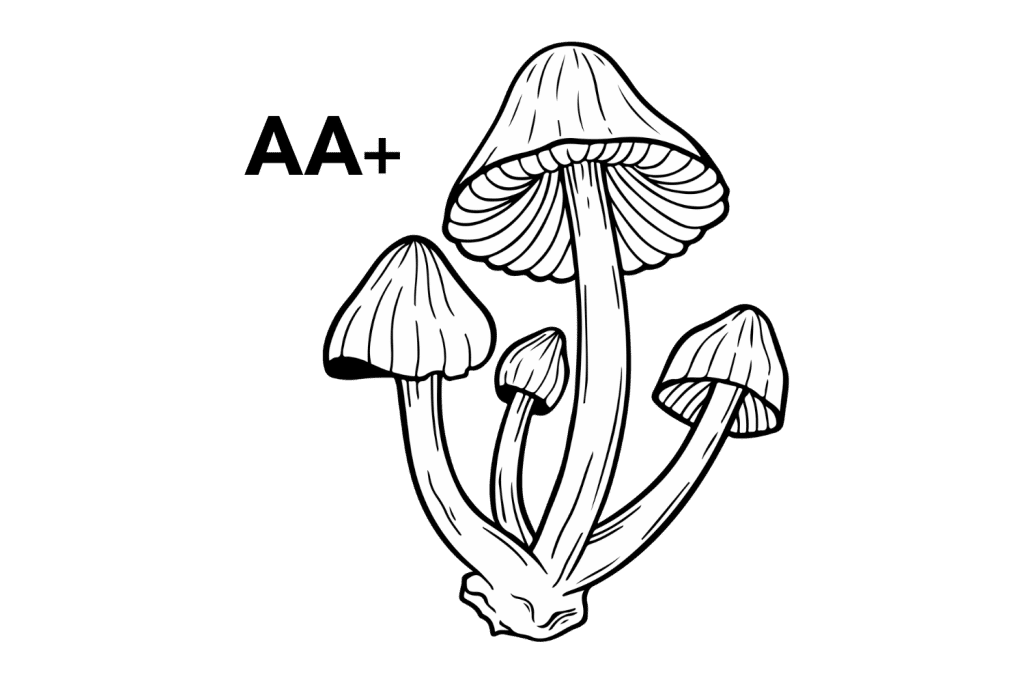
Albino A-Strain
Albino A-Strain (AA+) is a non-pigmented version of the original A-Strain. This isn’t a true “albino” but rather a leucistic strain because it produces purple/black spores, and the fruiting bodies can pigment when exposed to light.
It has a potency similar to the original A-Strain and produces the same large fruiting bodies but without the pigment. For an “albino,” AA+ is said to be relatively easy to cultivate. However, it does have extended colonization and fruiting times — even more so than its parent strain.

B+ strain
The B+ strain (B+) was developed by the same grower as the A-Strain — Mr. G. At one stage, the B+ strain was awarded “The Shroomery’s Most Popular Psilocybe cubensis Strain.”
This classic has been around for decades, and though it doesn’t share genetics with the A-Strain, it does share part of its origins.
This is an incredibly easy strain to grow and is the perfect choice for beginners. It can survive and even thrive in unoptimized growing conditions and has excellent contamination resistance. It produces particularly large mushrooms with above-average potency.
Strains vs. Species: What’s the Difference?
Strain and species are terms given to biological groups of organisms, but the two words are used to describe different groups.
These terms can be confusing, but don’t worry — they’re extremely easy to differentiate and understand.
Here’s a breakdown of the differences between strain and species:
What Does the Term “Species” Mean
Species refer to a specific group of organisms with the same genetics. Species are capable of exchanging genes and breeding to create fertile offspring.
Species is the second word in a binomial name (Latin name). For example, cubensis is the species identifier in Psilocybe cubensis. The first word (in this case, Psilocybe) indicates the genus — a genetically similar group of species.
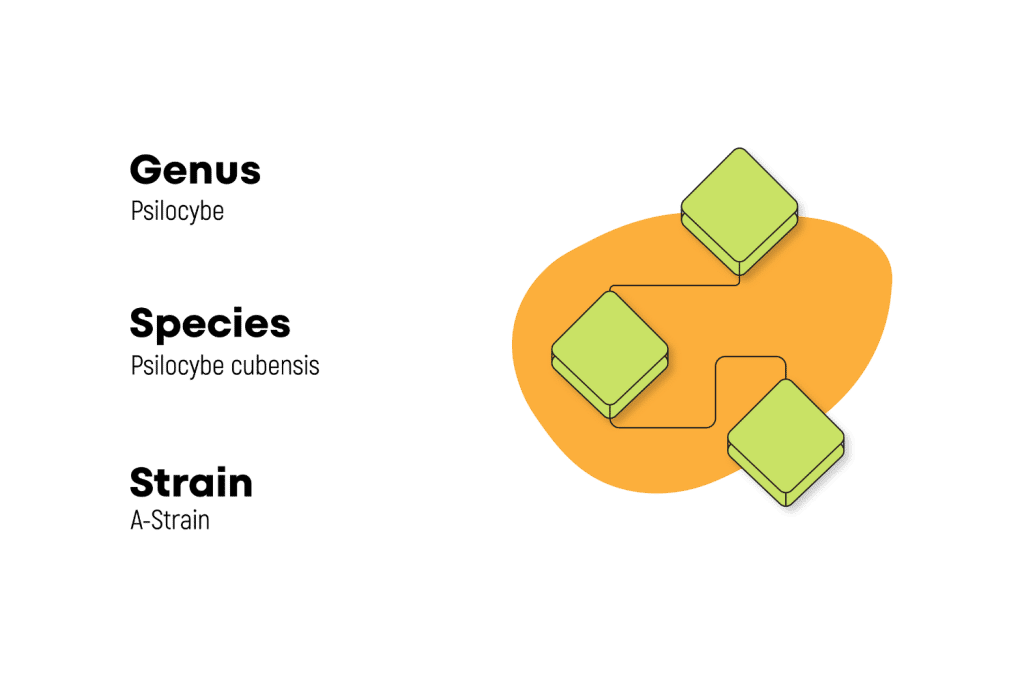
What Does the Term “Strain” Mean
Strain is the term given to a genetic sample of a species that produces a specific set of traits or characteristics. Although all strains under one species are the same “species,” they can differ in one or more ways. Strain names allow us to identify these differences under one species.
A single species can be made up of several different strains. Take the species Psilocybe cubensis, for example. This species comprises hundreds of mushroom strains that occur naturally or are produced by humans through genetic crossbreeding.
You’ll find strains such as Golden Teacher, A-strain, Peru, Penis Envy, and many more. Although these strains differ vastly in appearance and chemical makeup, they are all part of the Psilocybe cubensis species.

